Tamara Ferioli (Legnano, 1982) is a globe-trotter artist who prefers the most pristine places on Earth. In each journey she collects and catalogs materials, stones, insects, vegetables and objects that will constitute the soul and the symbolic nucleus of her works, which investigate the multiple forms of nature as a repository of arcane laws of conservation and transmission. In her elegant and stylized drawings and sculptural installations the syntax of life appears crystallized and suspended in an eternal moment that becomes quintessence and introspection. Everything happens in solitude and the human presence is only mildly evoked as a witness to ever-changing wonders and perhaps as a possible threat to their delicate and mysterious balance. All taxonomic separations disappear and the animal can become rock, fossil, flower or leaf as in the indistinct amalgam of creation, but the whole appears harmonious and rational because each element spontaneously finds its place and the right weight in a new ecosystem of signs. An omniscient structure emerges that bears the codes of gestation and beauty, in which the violence of the struggle for survival is diluted in elaborate visual architectures where nothing is left to chance. Contemplation of the work therefore also becomes for the spectator an immersion in a cosmic time where the mystery of life, death and rebirth sanctions the absolute need for every infinitesimal form of life.
Here are the questions we asked her to understand better her work:
Indonesia, Japan and Iceland are just some of your most recent travel destinations. When you decide to leave is the artistic inspiration or the desire for adventure that suggest you the destination?
The travel experience is necessary for me. Loneliness, isolation, getting involved to solve practical survival problems are a form of education, which allows me to be more serene in routine and in everyday life. The places you mentioned, for example, have in common the presence of volcanoes. They are distant and different places, linked by the overwhelming presence of a threatening nature, with which to come to terms every day. Different languages that express the power of life and of human beings. Lifeblood for a work of art, and for a more authentic awareness of life and of oneself.
Nature (probed, analyzed, fragmented and recomposed) is the all-encompassing subject of your latest works. How have natural withdrawals that you often use as artistic material have influenced your expressive vocabulary?
I’ve always been fascinated by simple materials. From the austere dignity that a stone can have. Or the shyness of a branch. As a child I have always preferred objects from the forest or river near home, rather than conventional toys. I kept secrets that had the shape of a leaf, or a dead dry insect. The possibility of making them protagonists even of my iconographic narratives was a natural consequence.
The natural scenarios you recreate and conceptualize in your work convey contrasting sensations: the soothing beauty of the wonders of creation seems to hide a profound sense of anxiety, aroused by the fragility of materials and the incessant metamorphosis to which their combinations allude. Would you like to tell us something about your personal approach to nature?
Sounds, rocks, landscape, marine flora and fauna, I use these elements as a starting point to study and contemplate compositions looking for connections between natural elements and human soul. The natural elements taken from their original function become a symbol. Every “experience” has its own specific weight and is therefore the right way to tell it. It depends on empathy.
Iceland has accepted my understanding of the development of artistic research as if it were its own alphabet. The natural element that appears in violent forms is perfectly integrated with the human presence. The architectures modified by the natural element. Unpredictable and unthinkable figures, where forms are the synthesis of the struggle between human reason and animal instinct.
One of the most original features of your designs, realized through a meticulous overlap of signs and papers, is the application of your long hair that takes on a double graphic and three-dimensional value. What does the inclusion of your biological trace mean to you?
In the drawings I hide myself by revealing myself. Hair is identity.
In your works two different figurative codes seem to coexist: in the details an almost calligraphic abstraction of the forms dominates, but the sum and the partial overlapping of so many meticulous details generates complex and three-dimensional shapes. In this way the visitor is invited to exercise an active observation because only from a distance he will be able to grasp the meaning of the whole, but he will have to come very close to understand the “DNA” of the image he is looking at. Does the double level of attention required by your drawings also reflect your approach to creation?
A single and unambiguous level of reading would not be enough to account for the complexity and at the same time simplicity of nature, and therefore of human beings. In my work animals like natural elements are allegories of moods. They embody a disorder or a pleasure. Fish, like plant elements and crabs change identity according to the context in which they appear, which is in turn a protagonist. Sometimes, in my works, even the speeches are transfigured into objects or animals. The theses that I have embraced and those that I hated live a parallel existence in the elements or in the forms of life, which remind me of them. I am inside that volcano, as I am inside that branch, as I am inside that shell or in that stone. They are all my parts, imagined, magnified or diminished as in dreams.
Would you give us a preview of your future projects?
Until April 7th the installation “The wide sea comes each morning” will be open to visitors in the “Another Spring” exhibition curated by Giuseppe Frangi in the suggestive location of Castello Oldofredi in Calcio (BG)
On May 8th in Milan at Mars I will present an unpublished installation, born from my last residence in Iceland, curated by Fabio Carnaghi.
Info:
Tamara Ferioli is reperesented in Italy by Officine dell’Immagine
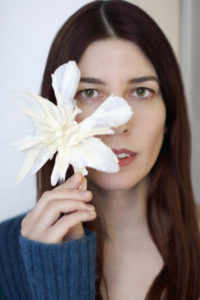 Tamara Ferioli
Tamara Ferioli
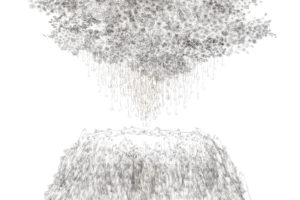 Tamara Ferioli, Volcano’s lullaby (dettaglio), 2018, matite e capelli su carta e tela 190×200 cm
Tamara Ferioli, Volcano’s lullaby (dettaglio), 2018, matite e capelli su carta e tela 190×200 cm
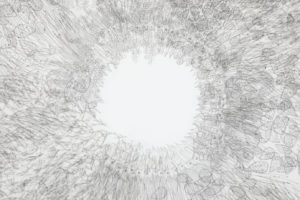 Tamara Ferioli, Disappear before appear (dettaglio), 2018, matite e capelli su carta velina e tela, 190×200 cm
Tamara Ferioli, Disappear before appear (dettaglio), 2018, matite e capelli su carta velina e tela, 190×200 cm
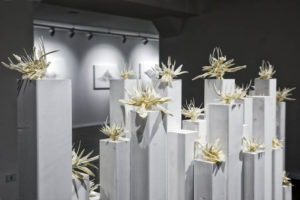 Tamara Ferioli, The wide sea comes each morning (dettaglio installazione), 2016-2017-2018 Ossa di pesce selvatico pescato nel Nord Atlantico: merluzzo nordico (Gadus morhua), eglefino (Melanogrammus aeglefinus) e pesce lupo (Anarhichas lopus), dimesioni variabili
Tamara Ferioli, The wide sea comes each morning (dettaglio installazione), 2016-2017-2018 Ossa di pesce selvatico pescato nel Nord Atlantico: merluzzo nordico (Gadus morhua), eglefino (Melanogrammus aeglefinus) e pesce lupo (Anarhichas lopus), dimesioni variabili
For all images: ph credits Marco Mignani
Graduated in art history at DAMS in Bologna, city where she continued to live and work, she specialized in Siena with Enrico Crispolti. Curious and attentive to the becoming of the contemporary, she believes in the power of art to make life more interesting and she loves to explore its latest trends through dialogue with artists, curators and gallery owners. She considers writing a form of reasoning and analysis that reconstructs the connection between the artist’s creative path and the surrounding context.


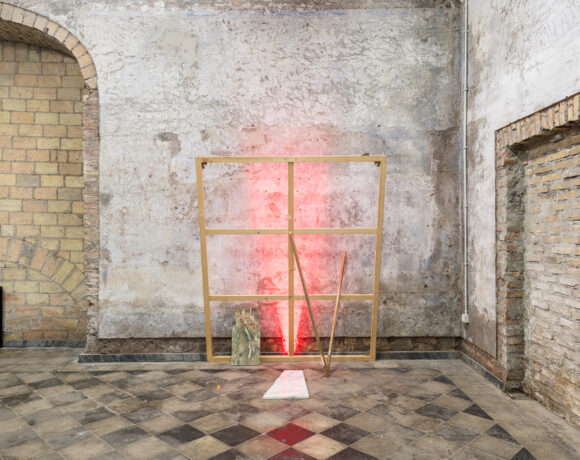
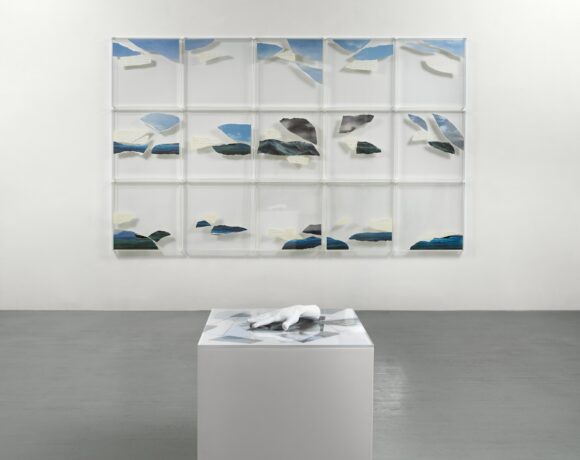
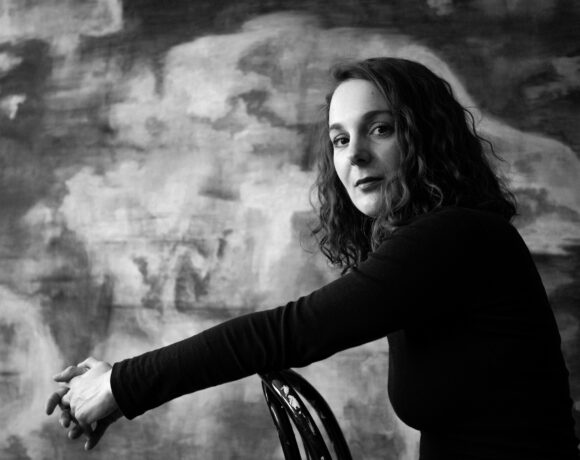

NO COMMENT